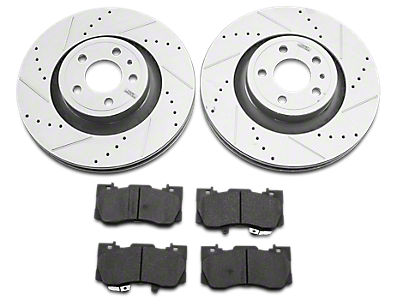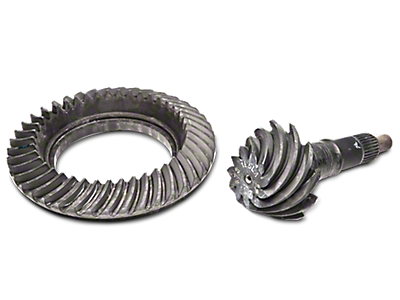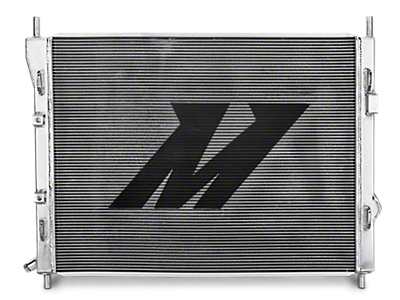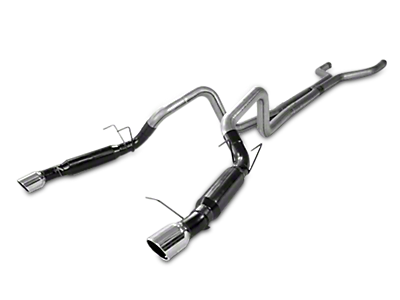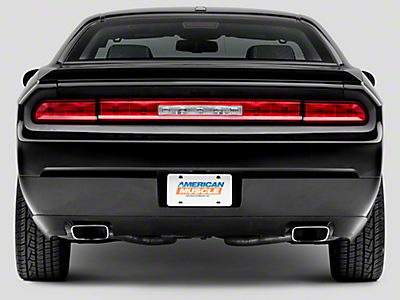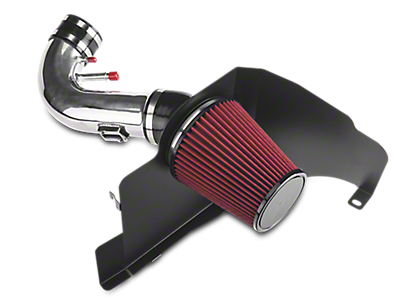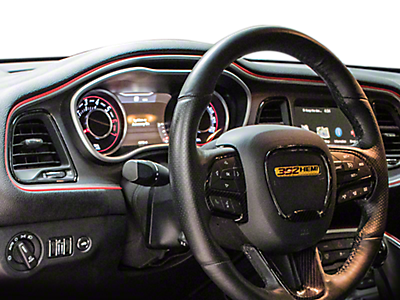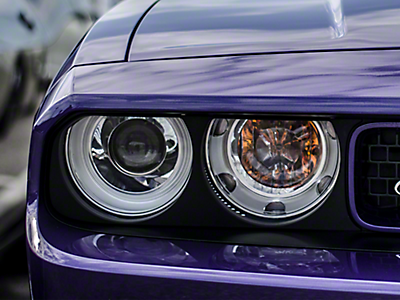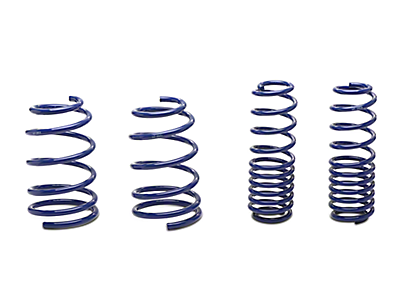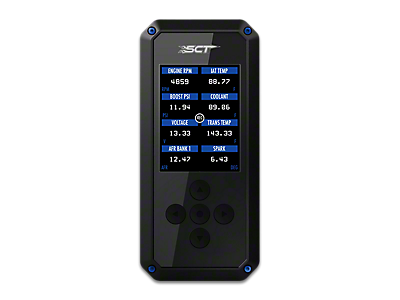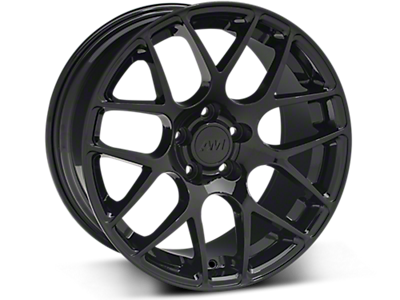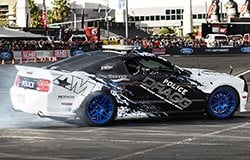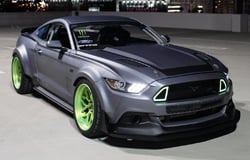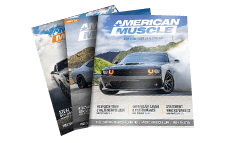If you’re someone who loves American muscle, you can't go wrong with a 2015 Dodge Challenger. It's the epitome of a muscle car with its loud V8 engine, aggressive styling, and powerful stance. In fact, it's even one of the better V6 platforms out there if you’re looking for a fuel-efficient muscle. While we love what Dodge did from the factory, have you ever wanted more for your car? Sure, it's powerful enough already, but what if you could add even more horsepower to a V6, V8, or even a Hellcat? Or perhaps you’re in the market for more unique wheels and tires? Regardless of what you’re after, we have you covered with plenty of Dodge Challenger accessories, parts, and mods. Whether you want to add a little more style to your muscle car, or you need to replace something that's broken, we invite you to explore our catalog of premium parts from brands you can trust including Borla, Flowmaster, K&N, SpeedForm, and MP Concepts.
2015 Dodge Challenger Accessories
When you want to add some style to your vehicle, you need the right 2015 Dodge Challenger accessories. We carry a wide range of accessories for any budget, whether you want to add something simple like a rear spoiler or something more complex like a cowl hood, AmericanMuscle has you covered. Wheels, tires, louvers, and other accessories will also help you personalize your muscle car to your liking. Bumpers, rear bumpers, lights, and window tints are also good choices if you want to add some style. We carry a wide variety of color options, along with carbon fiber, black, and chrome parts, so style should never be an issue for your Dodge Challenger when you shop with AmericanMuscle.
2015 Dodge Challenger Parts
The 2015 Dodge Challenger was built well from the factory, but parts don't last forever. While you'll get a lot of use out of shocks, struts, and other suspension parts, things like brakes, oil filters, air filters, and fuel filters will wear down over time. Luckily, we carry great replacement parts for your Challenger to help you keep your engine running smoothly. Parts also don't have to be for worn-out or damaged components. The right parts can change how your engine sounds, like adding a cat-back or axle-back to your exhaust system or helping your Challenger lose a few pounds with a carbon fiber hood or trunk.
2015 Dodge Challenger Mods
One of the best parts about owning a 2015 Dodge Challenger is how well it can perform when you install the right mods like air intakes, intake manifolds, and new exhausts, increasing power becomes trivial. You can add new exhaust parts to improve how it sounds, forced air induction for big power upgrades, along with better tires to make sure you have enough traction to launch. Mods are available for your V6, V8, and Hellcat, so it doesn't matter what engine size you have. Whether you want to make a V6 more perky or squeeze the absolute most power out of a 700+ horsepower engine. At the end of the day, when you need 2015 Dodge Challenger mods and parts we have you covered at AmericanMuscle. Order online for fast shipping on all of our 2015 Challenger parts. If you have any questions, our sales techs will help you every step of the way.
The 2015 Dodge Challenger swaps the 1970s-style grille and taillights of the outgoing model for a set of new 1971 inspired exterior trim. It also retains the 8.4-inch Uconnect touchscreen interface, but the interior is now resplendent in premium-feeling materials. The Challenger SRT Hellcat is also new for 2015 and heralds the arrival of its mighty potent 6.4-liter supercharged V8 with 707 horsepower and 650 pound-feet of torque. The base Challenger SXT has a 3.6-liter V6 engine pumping out 305 horsepower and 268 pound-feet of torque. Challenger R/T has a 5.7-liter V8 with up to 375 horsepower for the six-speed manual and 372 horsepower with the eight-speed automatic. Finally, the Challenger R/T Scat Pack and SRT have a 6.4-liter V8 with 485 horsepower and 475 pound-feet of torque, paired with a six-speed manual or eight-speed automatic gearbox.
Track-Worthy Performance
EPA-mandated exhaust systems aren't ideal for extracting the best possible performance out of an engine. Due to tightening regulations, the stock mid-pipes restrict the airflow, essentially robbing your V6 or V8 Challenger of horsepower and torque. This doesn't necessarily mean you have to sacrifice emissions for performance, though. The aftermarket has developed high-performance exhaust systems for the 2015 Dodge Challenger that can still remain emissions compliant. Coupled with a high flowing set of aftermarket headers with accompanying catalytic converters, a proper cat-back exhaust system improves both exhaust flow and engine sound. Combining these two major exhaust components, you’re looking at an additional 20-30 horsepower , not to mention giving your muscle car a beastly exhaust sound.
Tame the Beast
The Challenger is an absolute hoot in a straight line, but it needs a few tweaks to tame its rather busy rear end. Lowering springs will improve handling while giving your muscle car a more aggressive stance, but those springs can only do so much when you throw the Challenger into a corner. But if you pair those lowering springs with an aftermarket sway bar kit, you are sure to get crisper turn-ins with significantly reduced understeer and body roll, giving you more confidence to step on the gas as you exit the curve. Aftermarket sway bar kits have firmer and more durable polyurethane bushings and lightweight steel tubing to give your Challenger the driving feel of a tuned race car. Furthermore, some brands offer multi-point adjustability to fine-tune the level of rigidity acting between the control arms.
Stopping On A Dime
The 2015 Dodge Challenger R/T, R/T Scat Pack, and SRT need big brakes to stop repeatedly without brake fade. Upgrading to a big brake kit will not only improve the stopping power of your Dodge muscle car, but those multi-piston calipers and larger-diameter rotors will look good peering behind your car’s alloy wheels. There are many big brake kits to choose from, but your best bet is to select a four-piston caliper brake kit with 14-inch discs for street use or a bigger 6-piston or 8-piston caliper with 15-inch rotors for mixed track and street duty. These calipers can provide more clamping force across an increased surface area, providing better deceleration and heat distribution. Big brake kits are not cheap, but most come in a complete set, including cross-drilled or slotted rotors, calipers, brake pads, and the necessary mounting hardware. When upgrading the brakes, make sure to drain out the old DOT 4 brake fluid to make the most of your Challenger’s new anchors. Brake fluid is hygroscopic by nature and absorbs water and moisture from the environment and rubber brake lines. Replenishing the system with fresh DOT 4 brake fluid ensures your new brakes will perform flawlessly under heavy duress.

